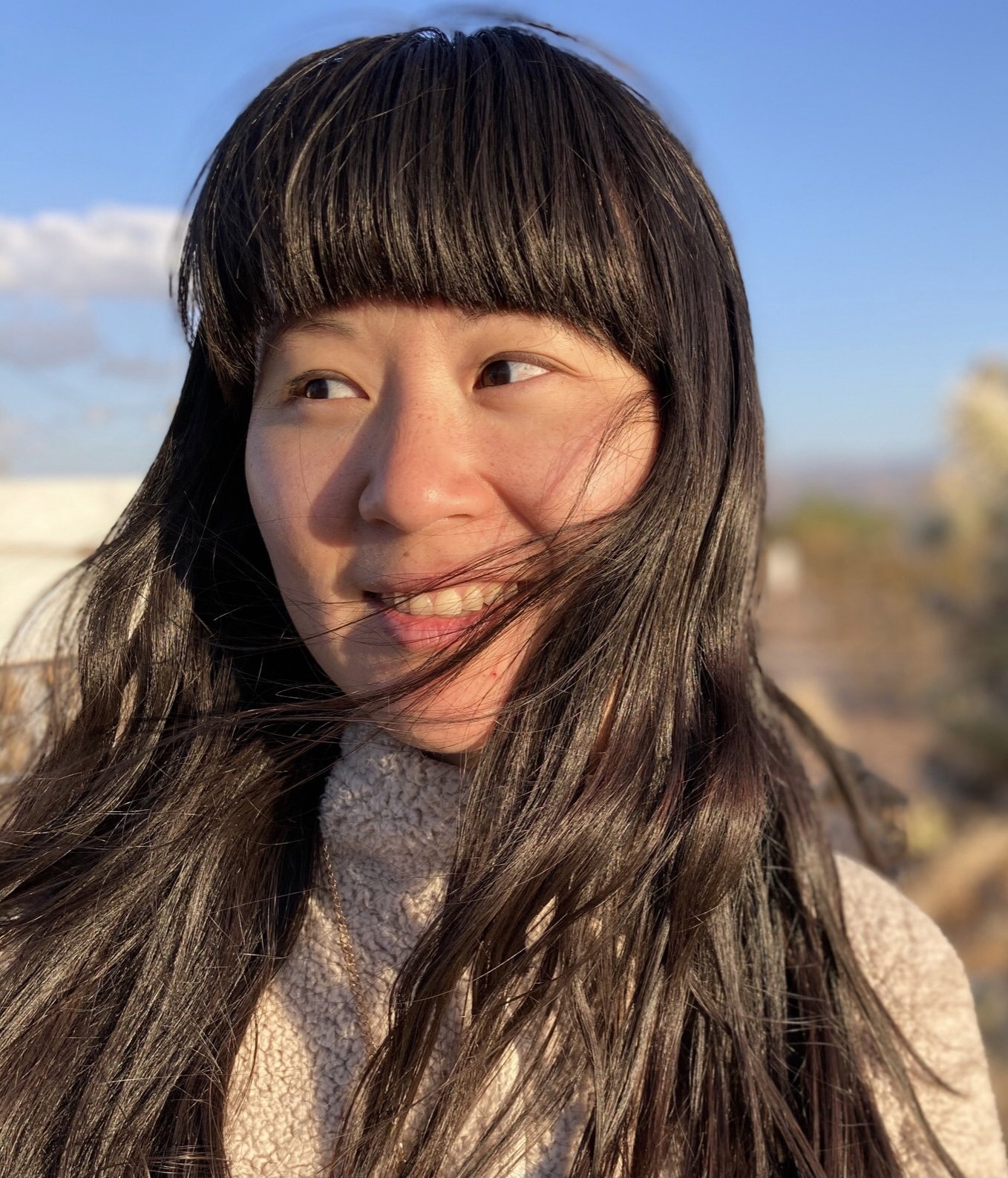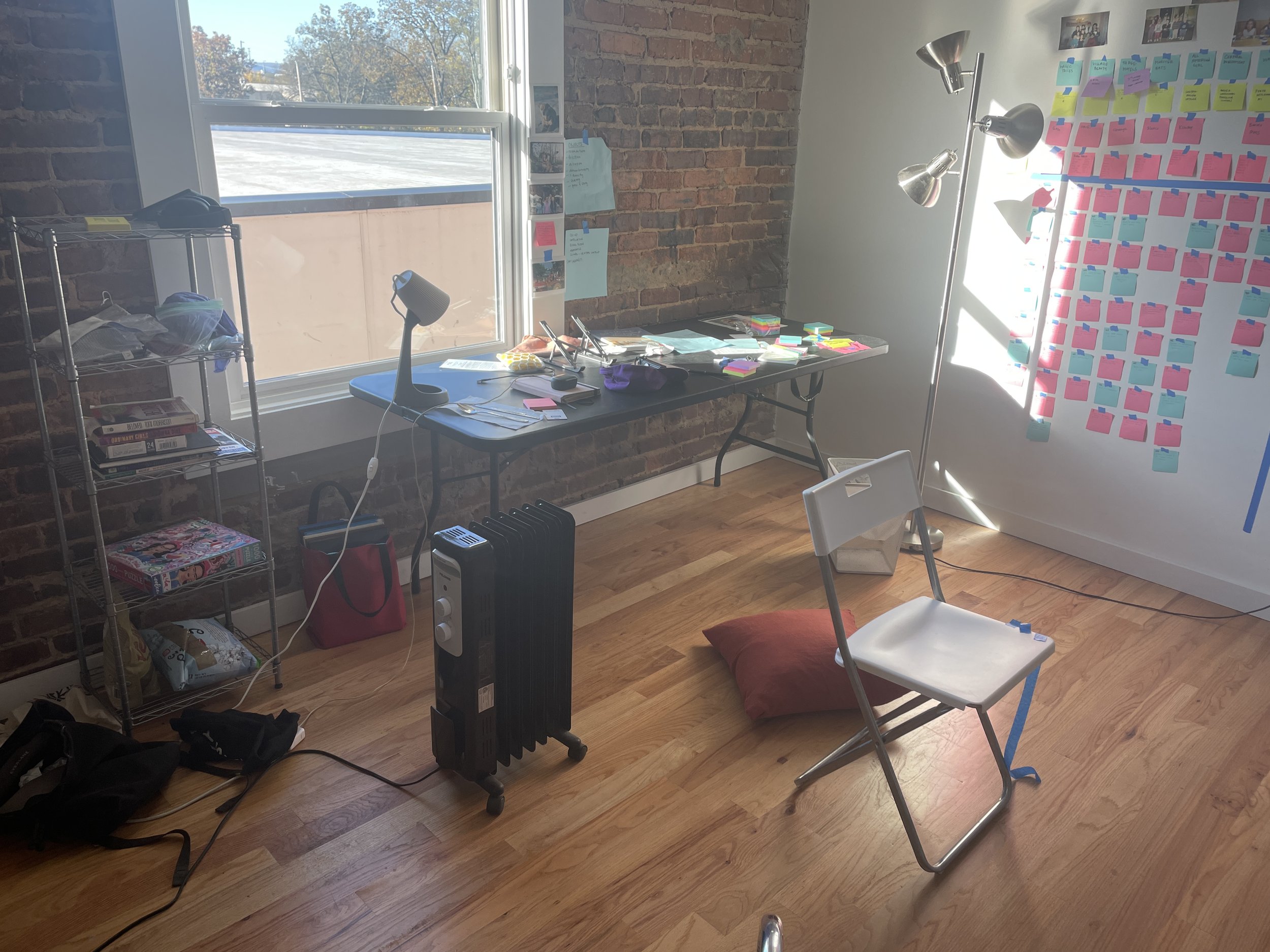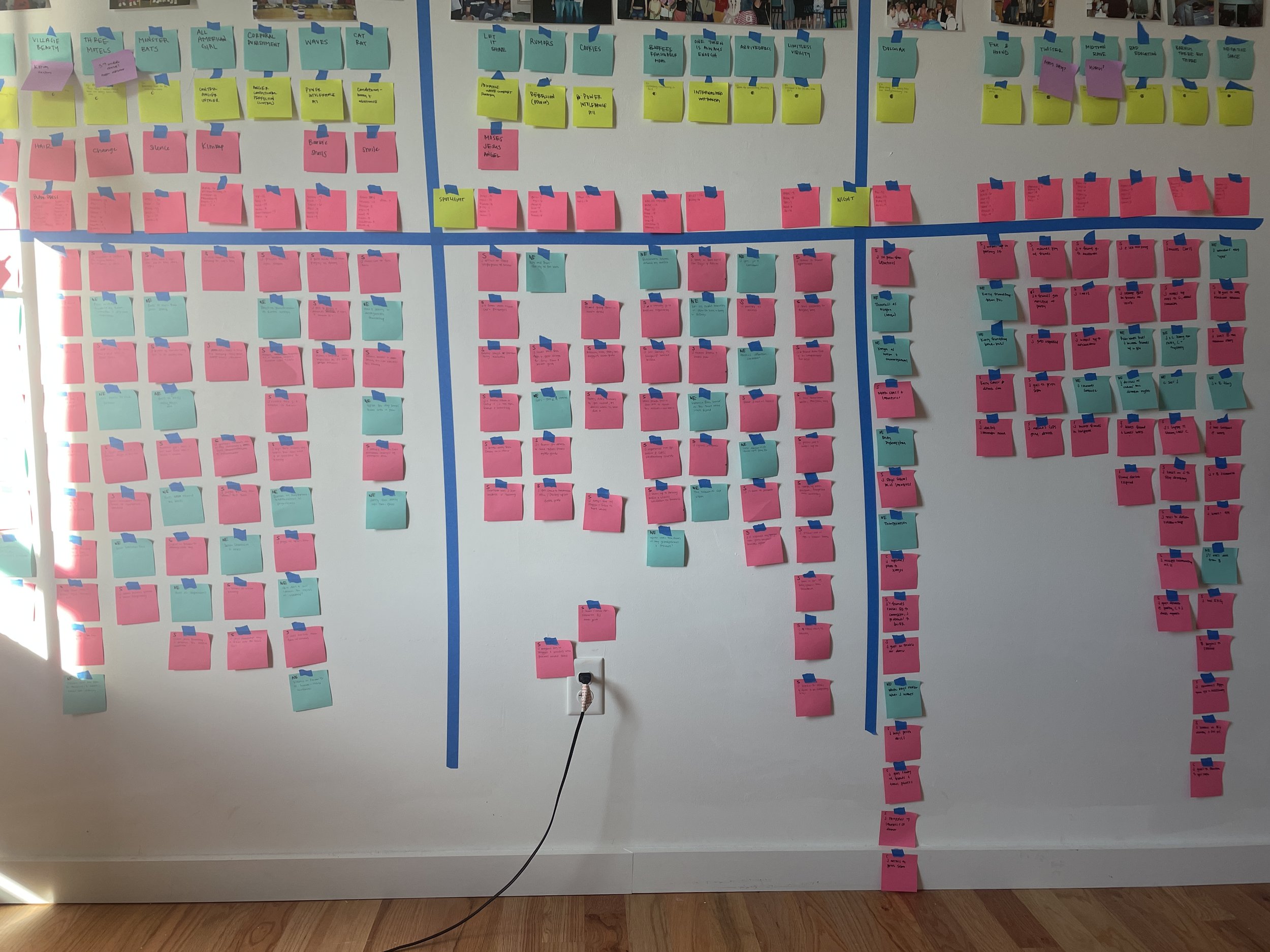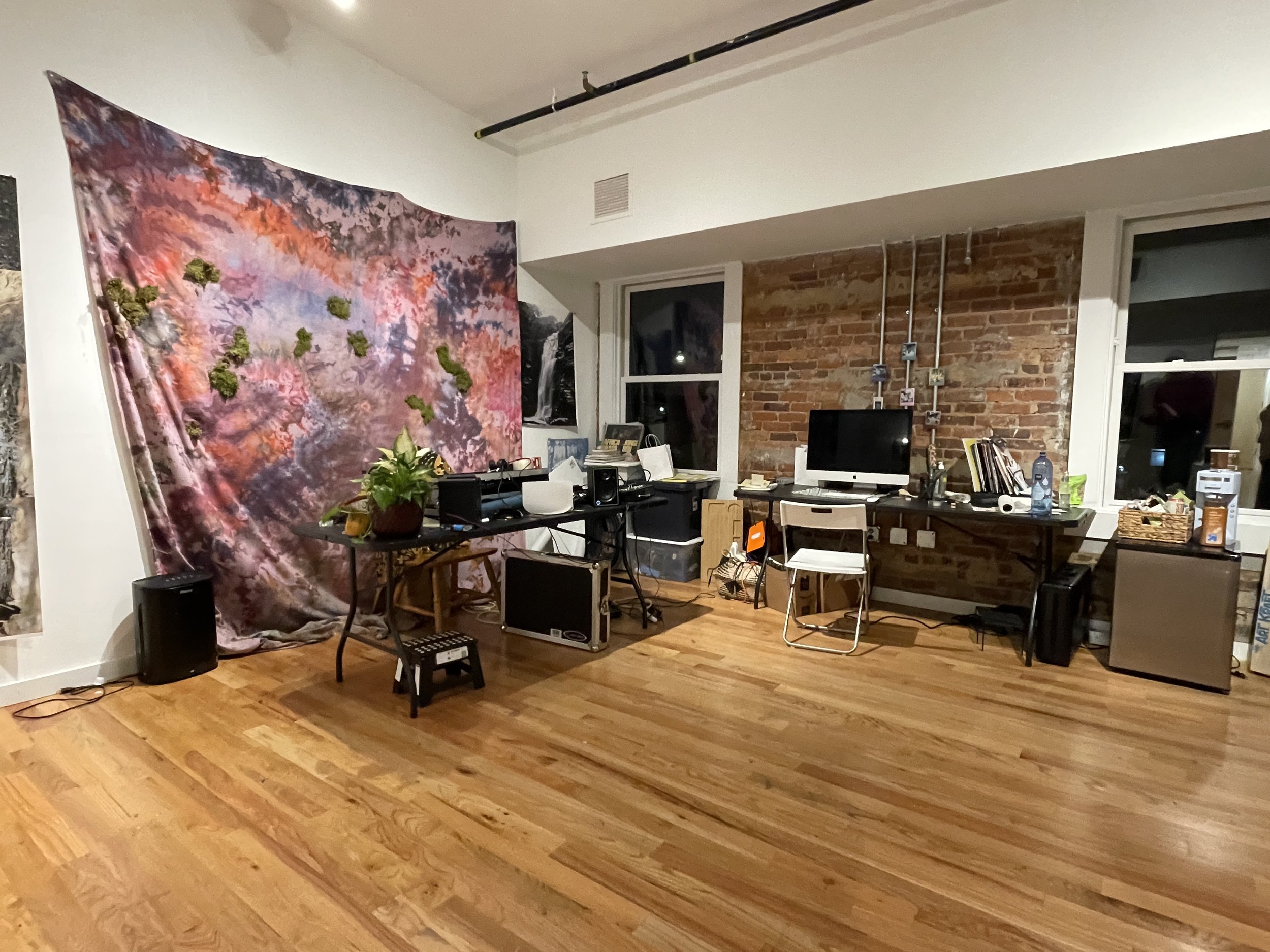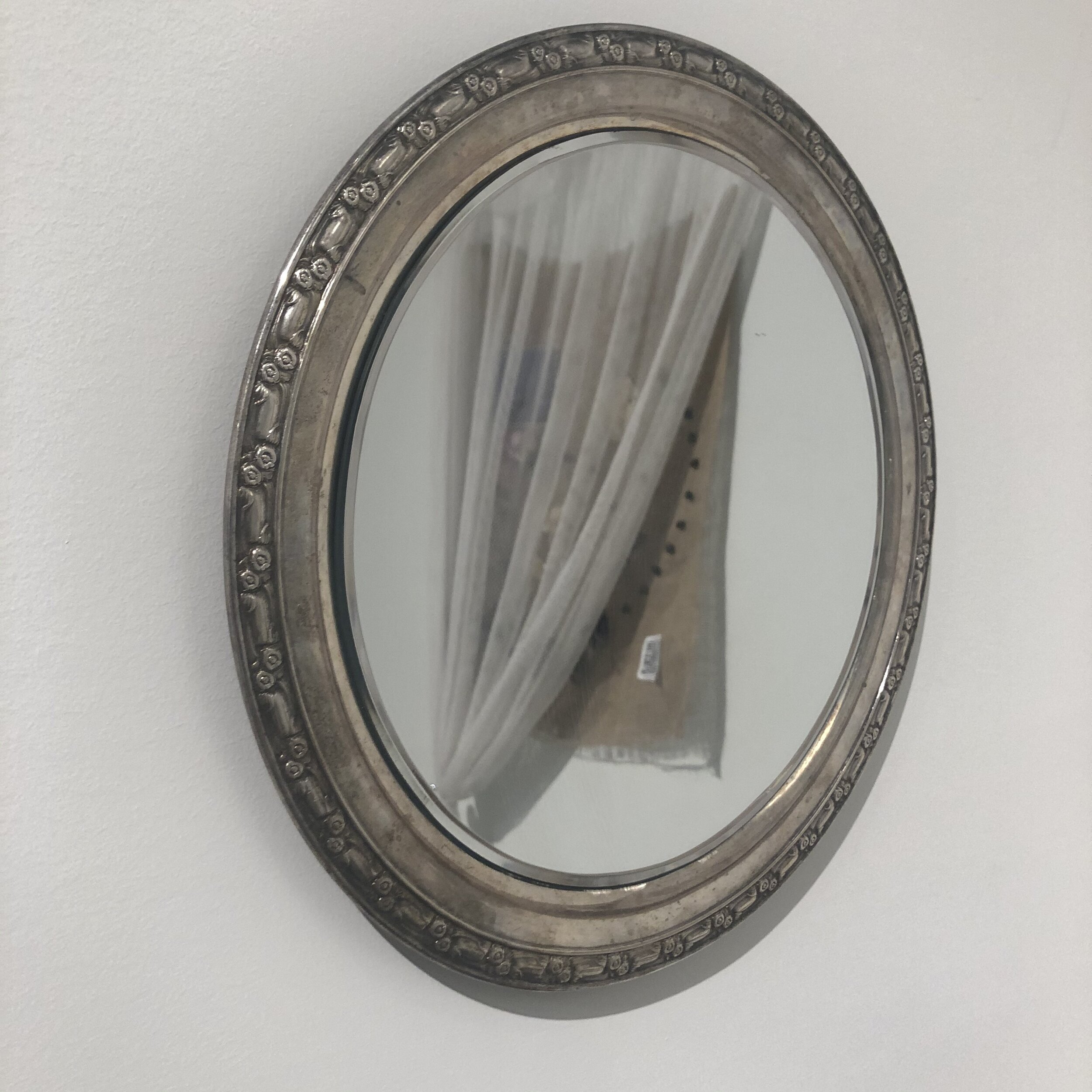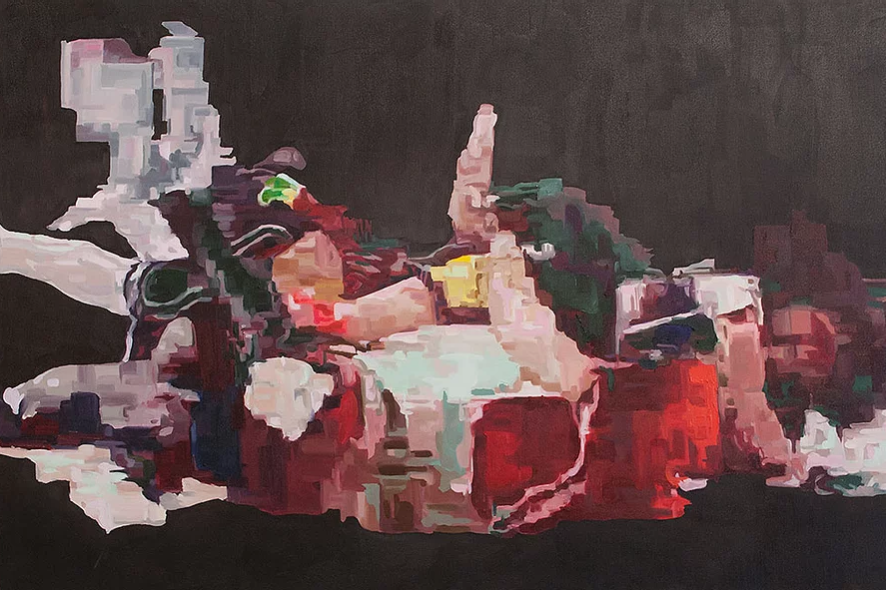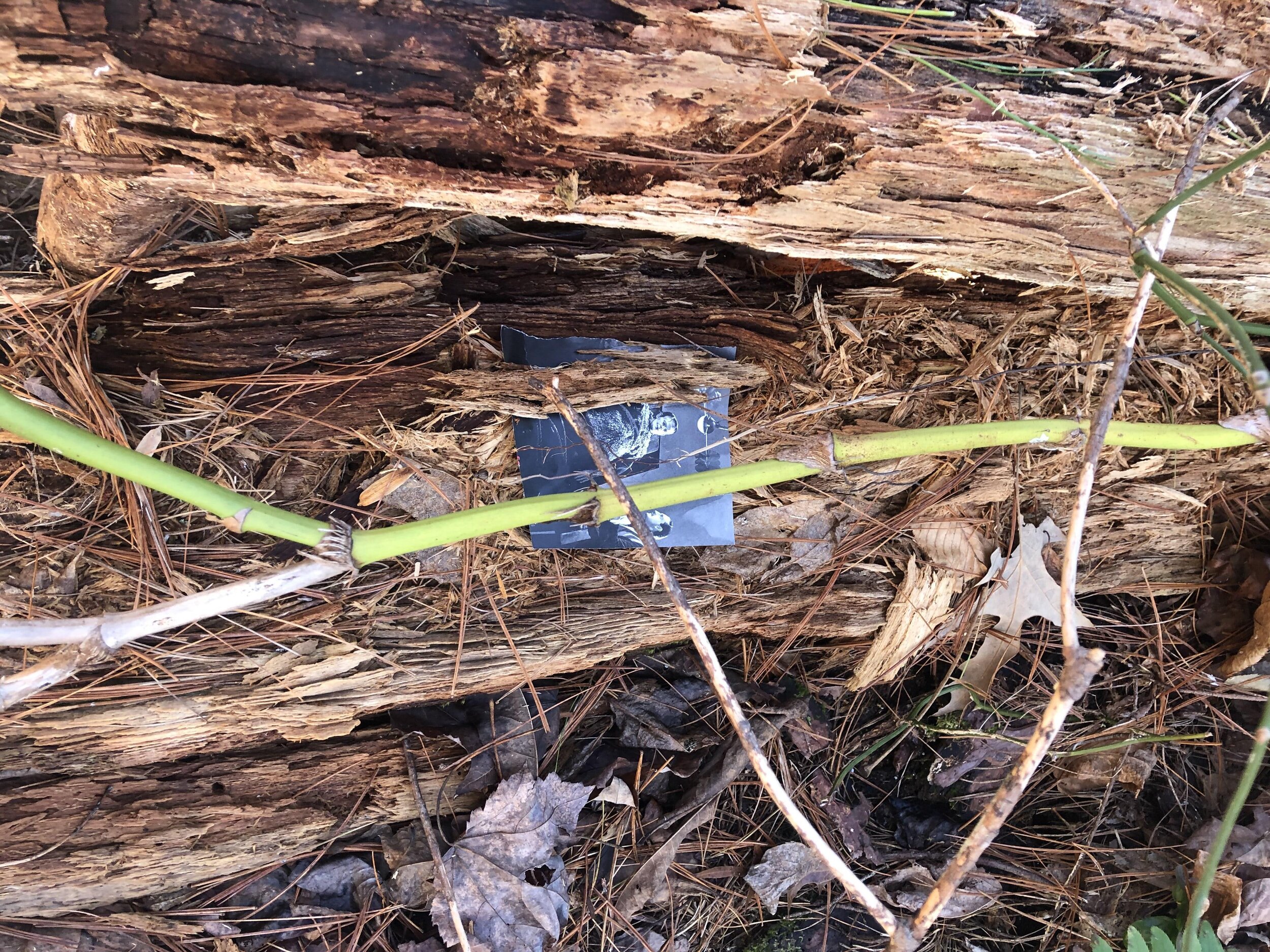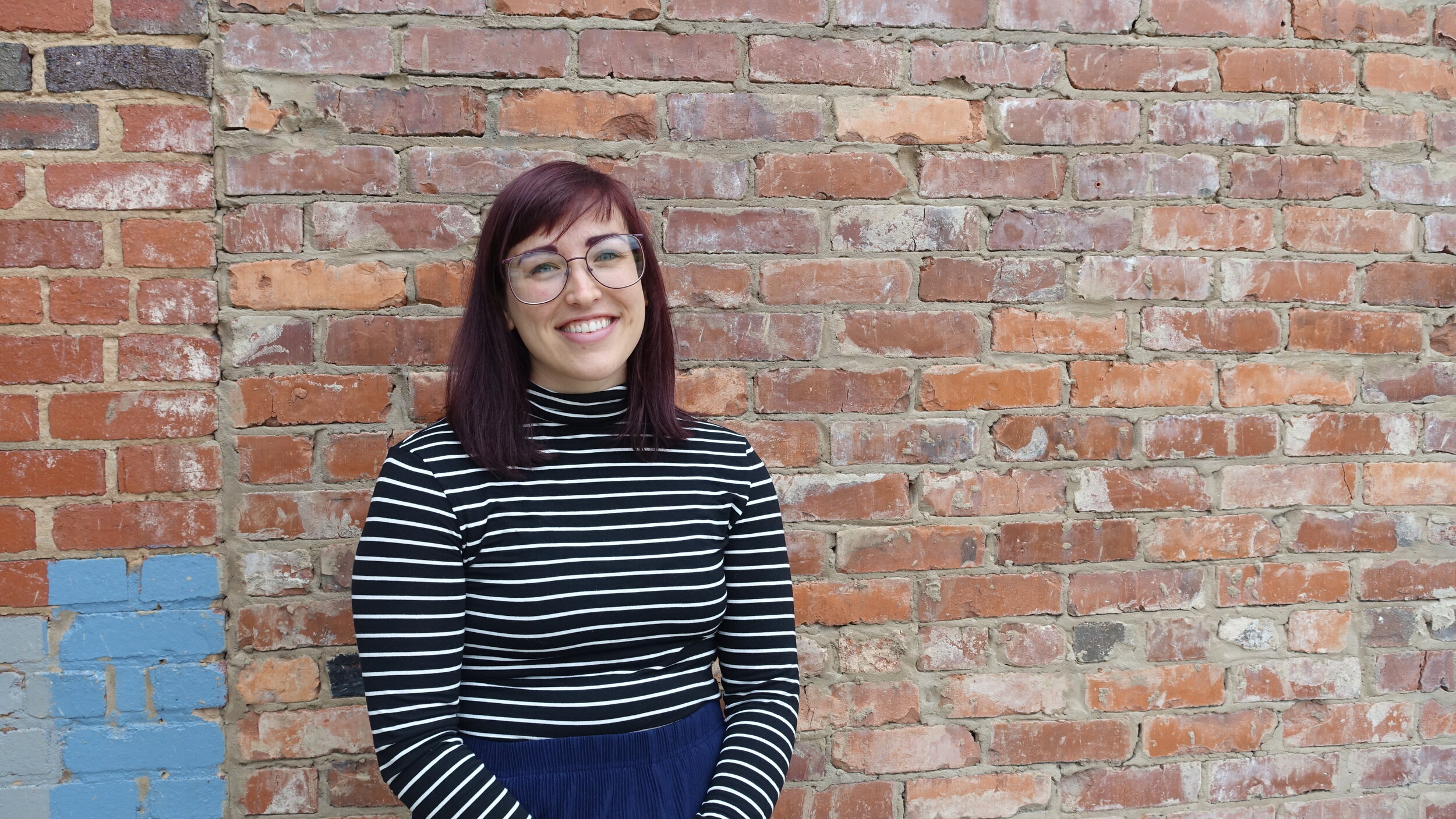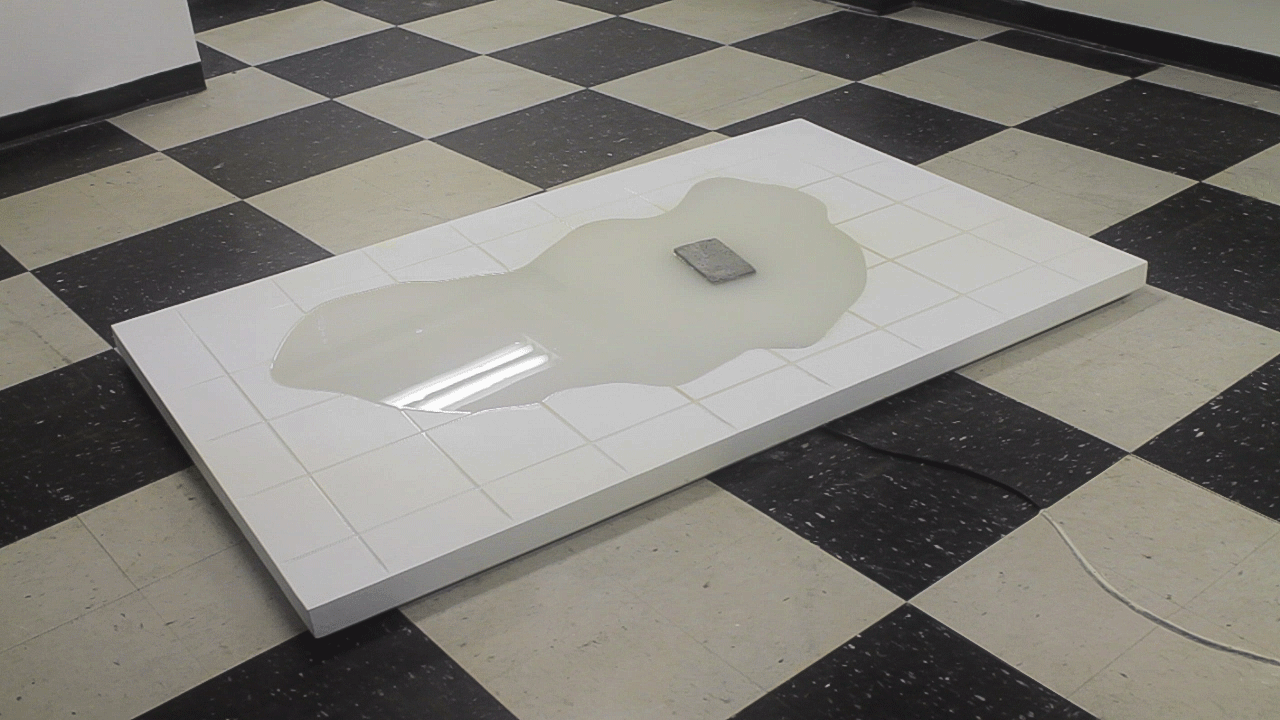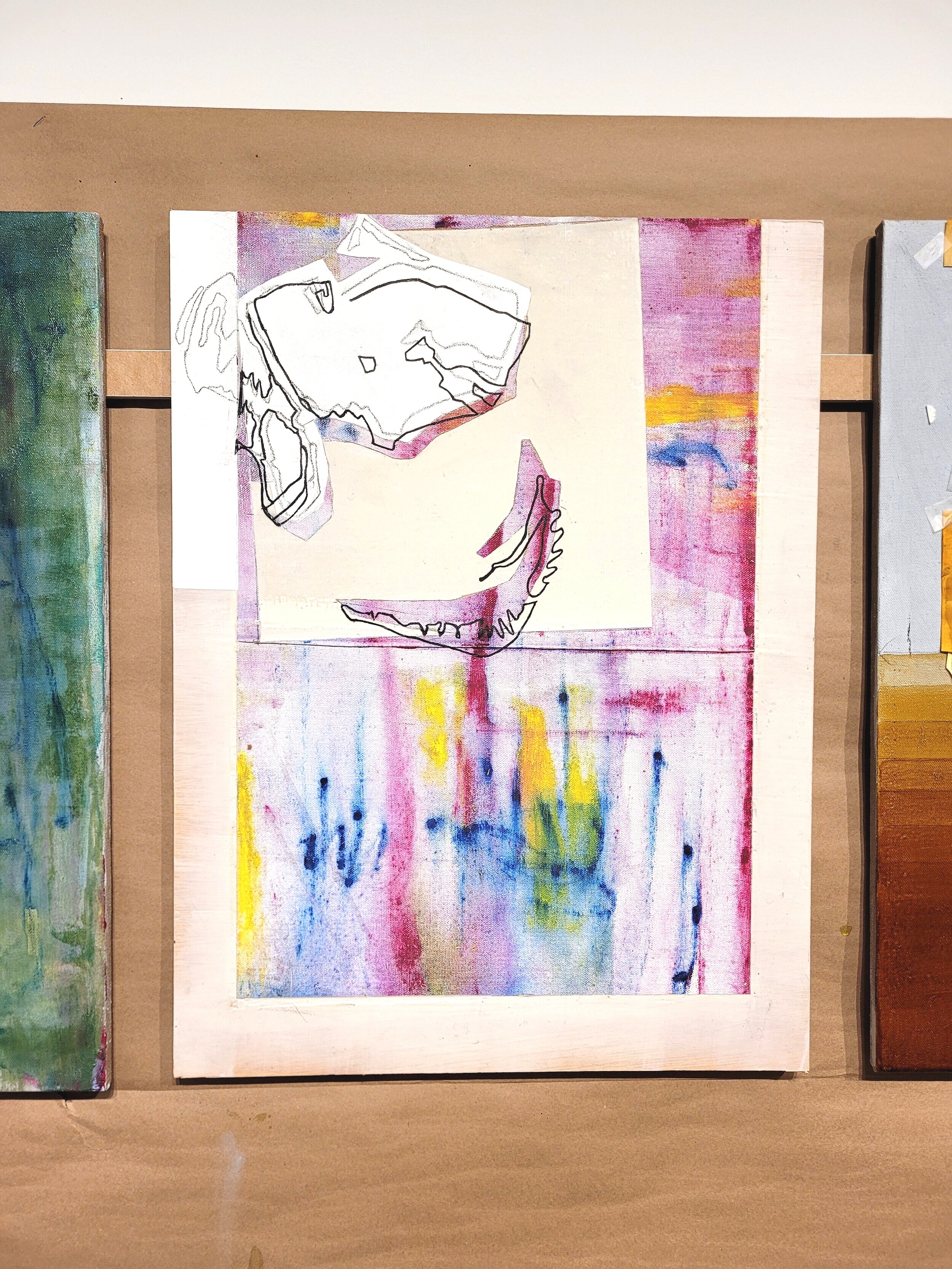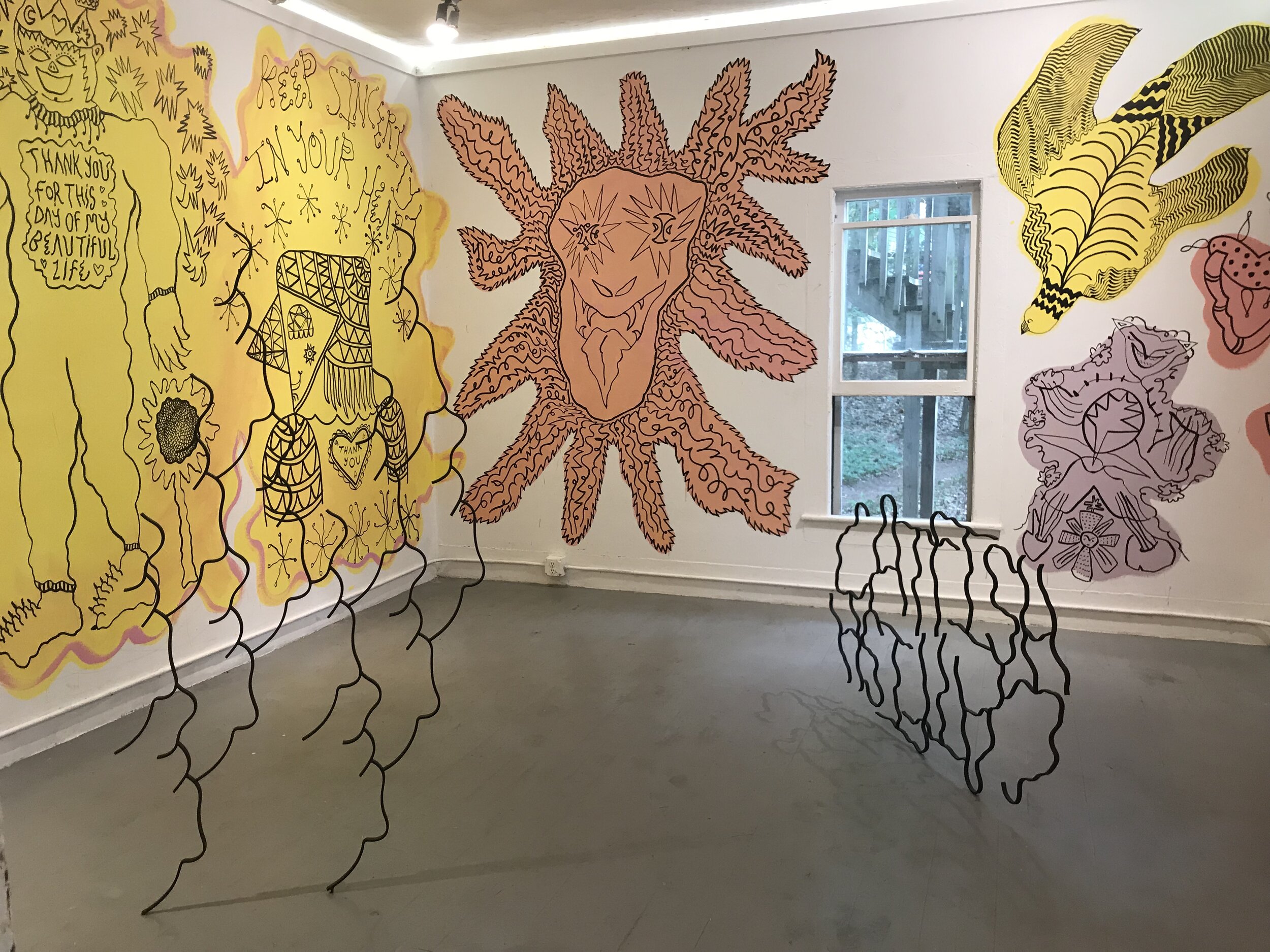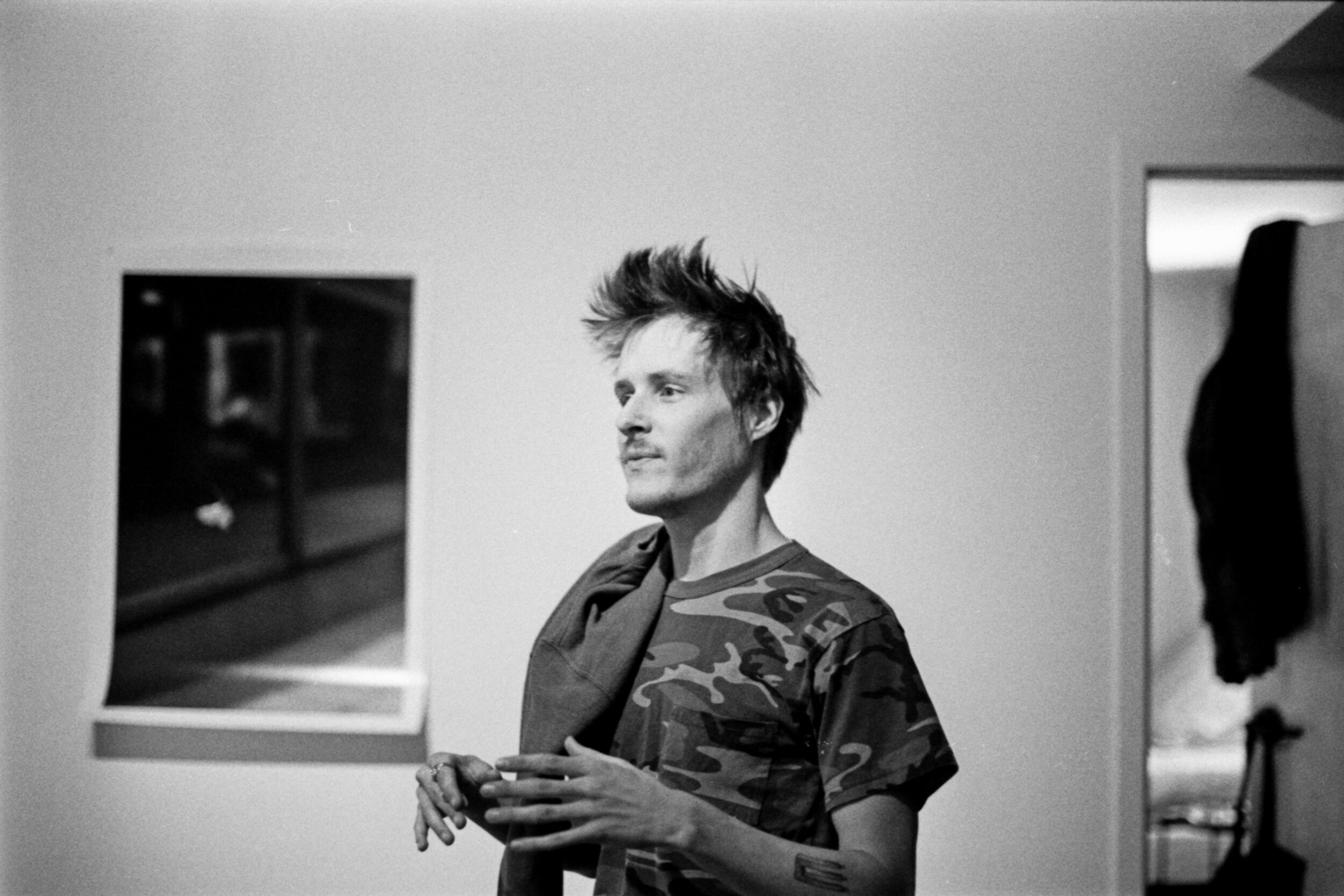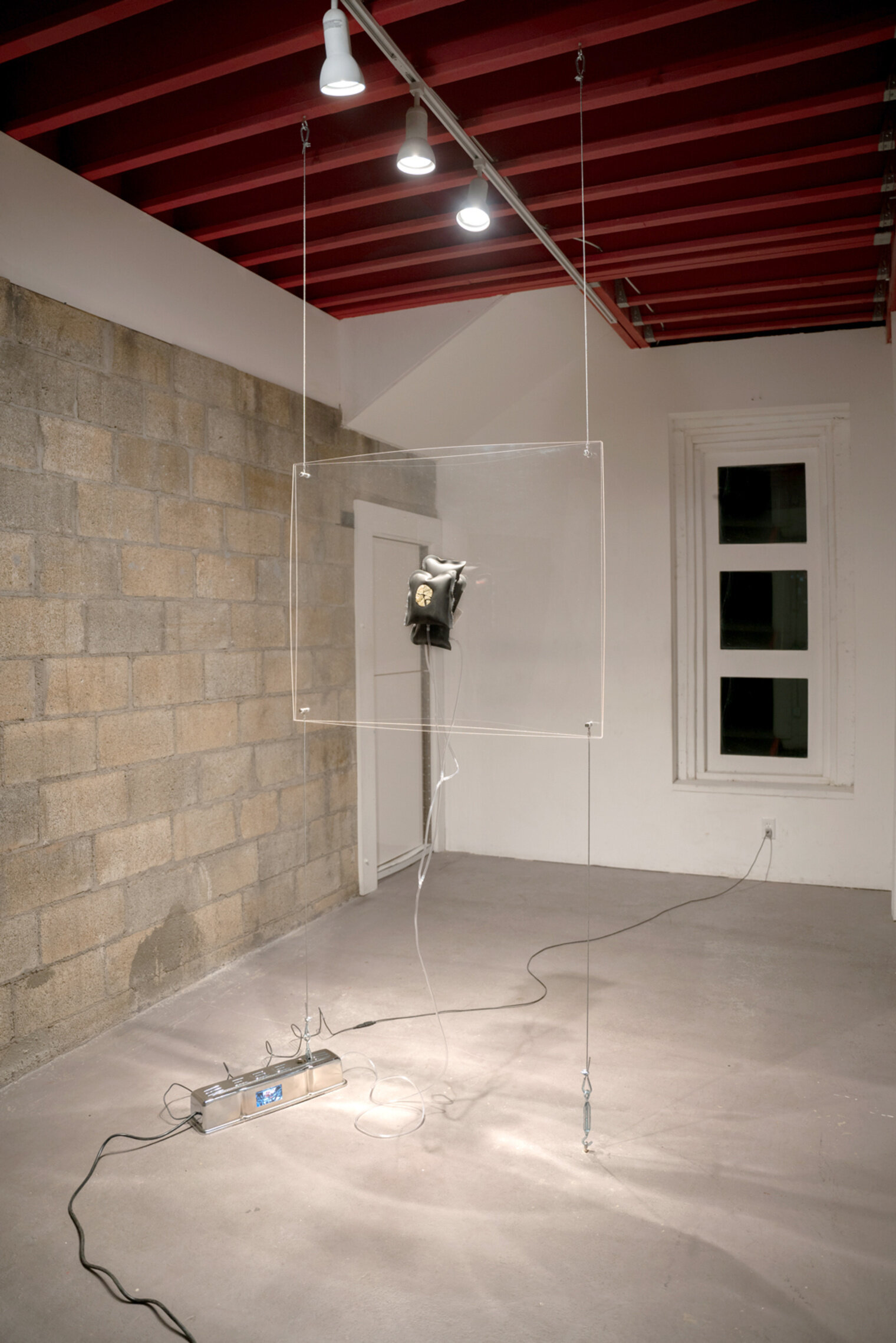Photo: Benjy Russell Photography
Why don’t you tell me about yourself?
I’m Jodi Hays. Large-scale collage-based paintings using reclaimed materials like cardboard, which I usually dye to expose those parallel rivulets you get from the cupboard corrugation. They’re not always large-scale. I’m based in Nashville and am so excited to be here because my studio at home is a garage. The ceilings in my garage are 8 feet tall and I have a lot of large projects coming up that I need to be able to see.
Jacob’s Ladder, 100x91 inches, dye, cardboard, tape, fabric and paper collage, 2022
What kind of work have you been getting done during your residency?
I’ve been getting a lot of large-scale work done–which you can see in this studio–as well as some smaller works. With this space, I can see 4 or 5 large-scale works in here at the same time. It’s amazing to work in a space that doesn’t have any history, compared to my garage. When I first applied [to Stove Works] I had a group show coming up at a Museum, but since I was accepted to this residency, it’s gotten pushed back, so the urgency of the work I’m making for that isn’t there anymore. It’s great because I can experiment more here.
A work-in-progress shot from Stove Works’ workshop space.
You mention this studio’s lack of history. What does that mean, and what is that doing for your work?
Practically and spatially speaking, my garage is my studio. It’s very private. When I'm driving my kids around the neighborhood and I’m collecting trash, my kids will see apartments being built and they’ll say, “Mom look, that house has a studio,” and I have to remind them that, no, that part of our house is actually a garage for the rest of the world [laughs]. But for me it’s a two-car garage that I share with the bikes and the lawn mower. Living in the city, it’s what I give up by having a private space in my home but it’s also about what I gain. I can clock in more hours because walking 20 feet from my house to my studio suits my lifestyle, but what I lose is the separation, the deep, deep 12 hour days where no one can find me. A three day block here is probably equal to like a month in my 20s. That's why I have so much work already here at this studio.
I can feel that development in the work around me.
Well yeah, there’s that. There’s the material labor and the invisible labor that goes into it. That’s kind of a nod to domestic labor; it can be dying, folding, organizing, cleaning.
A detail from Jodi’s studio
Is there anything else you’ve been able to do because you’re working here in Chattanooga?
I’ve had a good lineup of studio visits here, because I’m 2 hours from Nashville and about as far from Atlanta. And that was my aim: to take advantage of this luxurious amount of space. Also, the hands-off nature of this residency is brilliant. The way Charlotte and everyone have orchestrated time and space with this program has been great.
It has been a great opportunity to just get some deep work done with a clear head. I’ve got a pretty hefty showing schedule in 2023.
That’ll be all. Thanks, Jodi!
The following was written by Jodi after the completion of her residency with Stove Works.
I loved the short time I had with other residents, coffee and meals in between working in the studio were so nice! I hosted a few studio visits with curators and art dealers. I was also able to give a talk at UTC. My home studio is a garage with low ceilings, so I was able to stretch out and work large without interruption, spilling out into the workshop areas. I cannot overestimate the impactful timing of this gift. THANK YOU.






